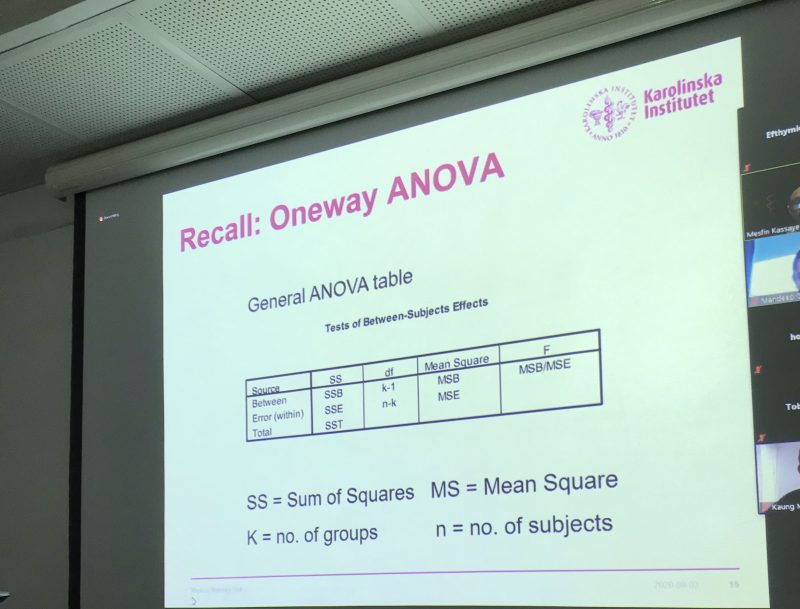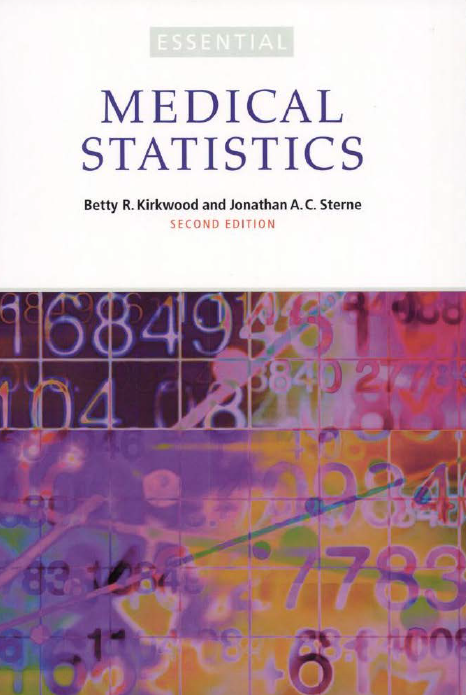
Medical Statistics II: a course review
We are back in Stockholm! Despite the current pandemic and challenges that it brings with it, I am very happy to start my second year as a master’s student at KI.
The third semester of the Health Economics, Policy and Management (HEPM) programme starts with the advanced course in medical statistics. Although a bit short, it was a very interesting and challenging course, especially for those coming from a less statistics-oriented background. Students are required to have passed at least 45 credits in order to take this course.
Course structure and content:
The course employed different methods like lectures, seminars, group discussions and computer-based exercises. The combination of different activities, even on the same day, made the whole experience a bit more engaging and less monotonous, which I must recognize is a great achievements considering that learning statistics is usually quite tedious.
The content covered include:

- One-way and two-way analysis of variance (ANOVA)
- Repeated measures ANOVA
- Logistic regression
- Survival analysis
Similarly to our statistics I course, we were provided after each lecture with some exercises and quiz-like questions in order to put together the concepts introduced. I want to stress out that this dynamic contributed a lot to our learning process since we were able to discuss throughly the answers to all cases with our teachers.
This course is organized by the Medical Statistics Unit at KI. Lectures and seminars were led by the course director Mesfin Kassaye Tessma (MD, MPH) and Daniel Olsson (Statistician), while the computer-based exercises were guided by two other statisticians, Eva Hagel and Ebba Petersson.
Schedule:
The course had a duration of 4 weeks. Lectures, seminars and group discussions were conducted in the mornings while the computer exercises were carried out on afternoons. Wednesdays were given to us for self studies and working on group assignments.
Computer-based exercises:
The course included three sessions of computer-based exercises using SPSS. We were allocated in small groups and worked using the breakout rooms feature of zoom, which allowed us to call teachers for help anytime. We learned how to run logistic regressions, survival analyses and repeated measures ANOVA.
Detailed feedback was provided a few days after the CBE. We were also given extra opportunities to correct mistakes and improve our analyses, which really helped us achieve successfully the learning outcomes.
Evaluation:
As usual, this course was assessed both individually and with group assignments.
- Group evaluation: CBE were mandatory but only graded with a pass/fail mark. In addition to that, we were assigned with academic papers that had flawed statistical analysis sections. Our task consisted in evaluating the chosen method and provide arguments on why it was not the most appropriate option. Moreover, we were asked to suggest appropriate statical methods and reflect on the advantages of each one. As a group, we also served as opponents to other classmates. This role-playing activity is very popular at KI since it helps students understand the different perspectives and learn from mistakes made in previous research.
- Individual evaluation: We were provided with an optional individual assignment that consisted of an individual assessment of the statical analysis from an academic paper. Students completing this assignment opted for the VG grade.
Class insights…
Kaung Mon Winn (Myanmar):
How was the learning process during the course?
It was quite okay to study throughout the course and attend the lectures via zoom (but I prefer learning through in-person classes though.) Although we need to accept the current situation due to COVID-19, entirely studying online throughout the course made us a little bored, and lose our concentration sometimes. But I appreciate it that they recorded all the lectures so that we could revise and catch some of the crucial points that we have missed.
We had two group work activities in this course, and the one with smaller numbers of group members was quite more effective than with a lot of members. Discussing a topic with a lot of people entirely online was quite challenging and exhausting. The course should take into consideration this next time when they form the groups. Generally, I was able to learn effectively from this course.
What are your thoughts regarding the CBE using distance learning?
I think online CBE classes are better for the students who have already been familiar with digital literacy. Some students who are not familiar with SPSS may find it difficult to follow this learning style. Even some students who used to use SPSS might also want to ask the teachers in person for some difficulties that we found during the exercises.
One of my experiences during this course was that we sent an email to a teacher of this course to ask for one question regarding one of the CBEs, but we got the reply only after submitting the answers on Canvas. Therefore, I want to say that the distance learning style for the CBE can somehow delay our learning process.
Menaka Parikh (Canada):
How was the learning process during the course? Did you find it difficult?
I think online learning in general is quite challenging although I am aware that many changes were made to the content and structure of the course to better suit online learning. Mesfin and Daniel were instrumental in making sure our learning needs were met however, it is difficult to replicate the in-class learning experience.
What are your thoughts regarding the computer based exercises using distance learning?
I liked having computer based exercises exercises immediately following the lectures as it was easy to apply new concepts right after theory. I think most of my learning was consolidated bc of this approach. The majority of the class (including myself) did not use a distance based learning style when completing the CBE work as it was too difficult to collaborate together without actually physically being together.
—-
Hope you enjoyed the blogpost! Stay tuned for more course reviews.
Godspeed,
Julio.
email: julio.sosa@stud.ki.se
Linkedin: https:/www.linkedin.com/in/julio-sosa-maldonado-659301175/
Instagram: @julio.sosam

0 comments